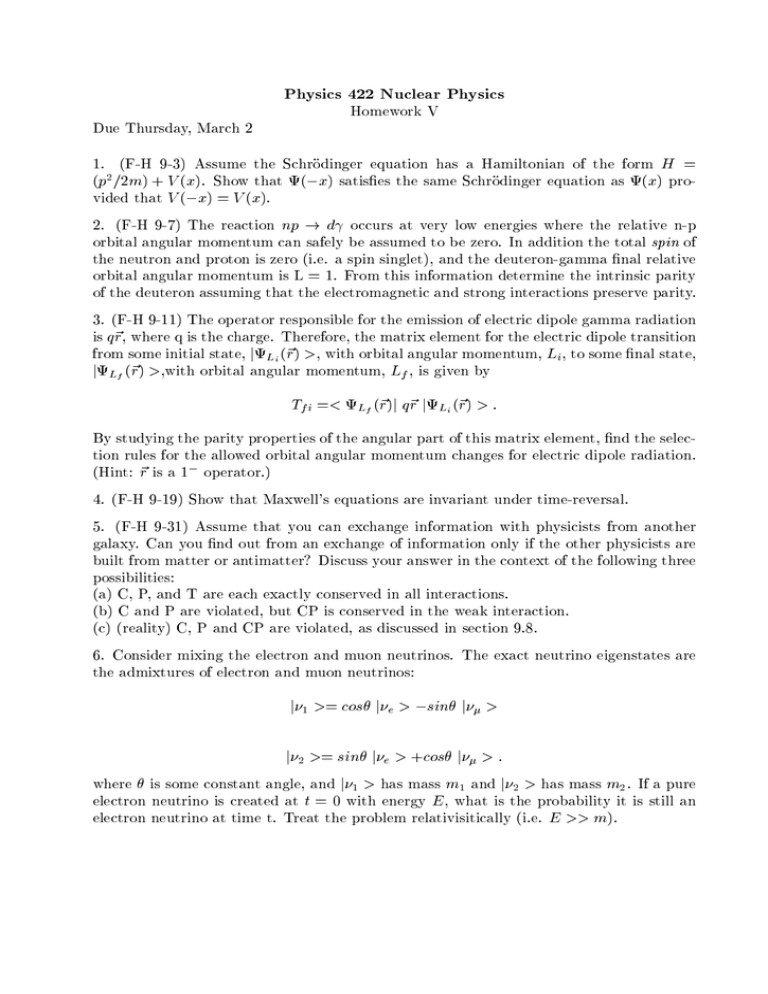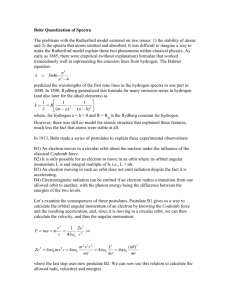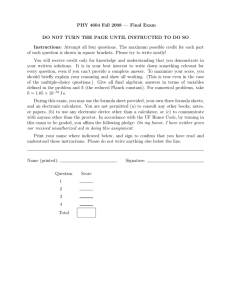Physics 422 Nuclear Physics Homework V Due Thursday, March 2
advertisement

Physics 422 Nuclear Physics Homework V Due Thursday, March 2 1. (F-H 9-3) Assume the Schrodinger equation has a Hamiltonian of the form H = (p2 =2m) + V (x). Show that ( x) satises the same Schrodinger equation as (x) provided that V ( x) = V (x). 2. (F-H 9-7) The reaction np ! d occurs at very low energies where the relative n-p orbital angular momentum can safely be assumed to be zero. In addition the total of the neutron and proton is zero (i.e. a spin singlet), and the deuteron-gamma nal relative orbital angular momentum is L = 1. From this information determine the intrinsic parity of the deuteron assuming that the electromagnetic and strong interactions preserve parity. 3. (F-H 9-11) The operator responsible for the emission of electric dipole gamma radiation is q~r, where q is the charge. Therefore, the matrix element for the electric dipole transition from some initial state, jLi (~r) >, with orbital angular momentum, Li , to some nal state, jLf (~r) >,with orbital angular momentum, Lf , is given by spin Tfi =< Lf (~r)j q~r jLi (~r) > : By studying the parity properties of the angular part of this matrix element, nd the selection rules for the allowed orbital angular momentum changes for electric dipole radiation. (Hint: ~r is a 1 operator.) 4. (F-H 9-19) Show that Maxwell's equations are invariant under time-reversal. 5. (F-H 9-31) Assume that you can exchange information with physicists from another galaxy. Can you nd out from an exchange of information only if the other physicists are built from matter or antimatter? Discuss your answer in the context of the following three possibilities: (a) C, P, and T are each exactly conserved in all interactions. (b) C and P are violated, but CP is conserved in the weak interaction. (c) (reality) C, P and CP are violated, as discussed in section 9.8. 6. Consider mixing the electron and muon neutrinos. The exact neutrino eigenstates are the admixtures of electron and muon neutrinos: j1 >= cos je > sin j > j2 >= sin je > +cos j > : where is some constant angle, and j1 > has mass m1 and j2 > has mass m2 . If a pure electron neutrino is created at t = 0 with energy E , what is the probability it is still an electron neutrino at time t. Treat the problem relativisitically (i.e. E >> m).





